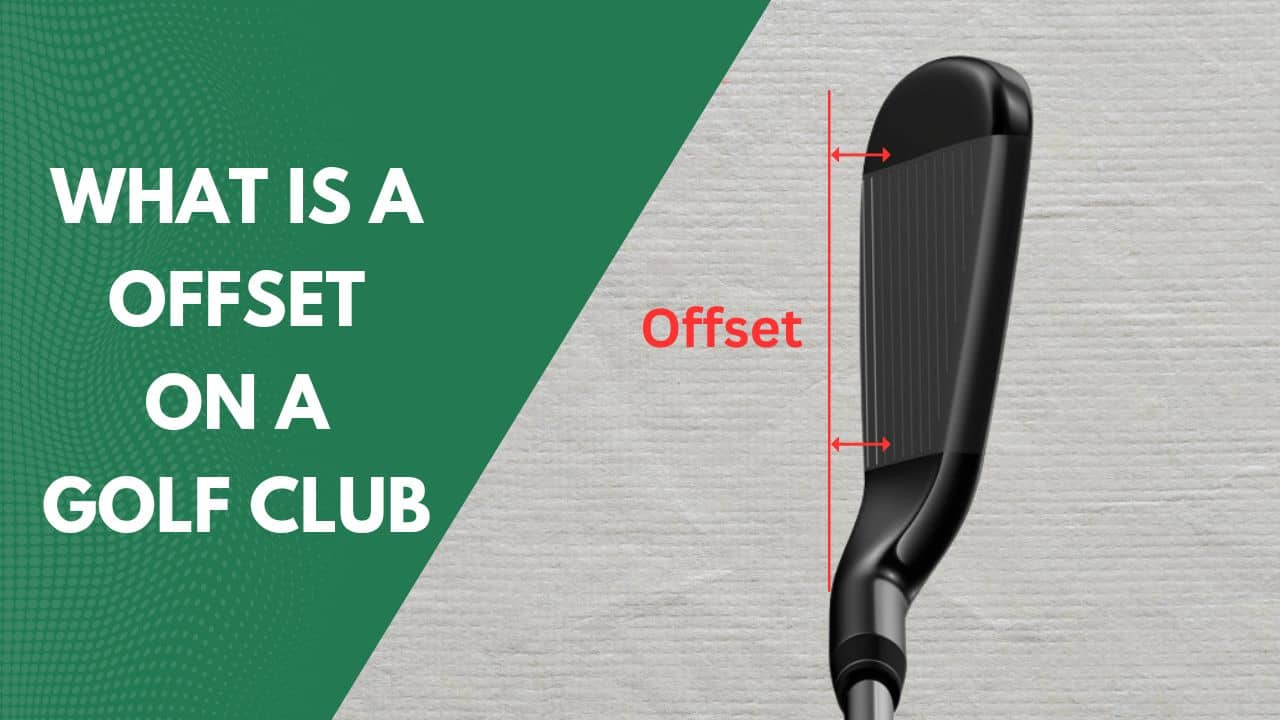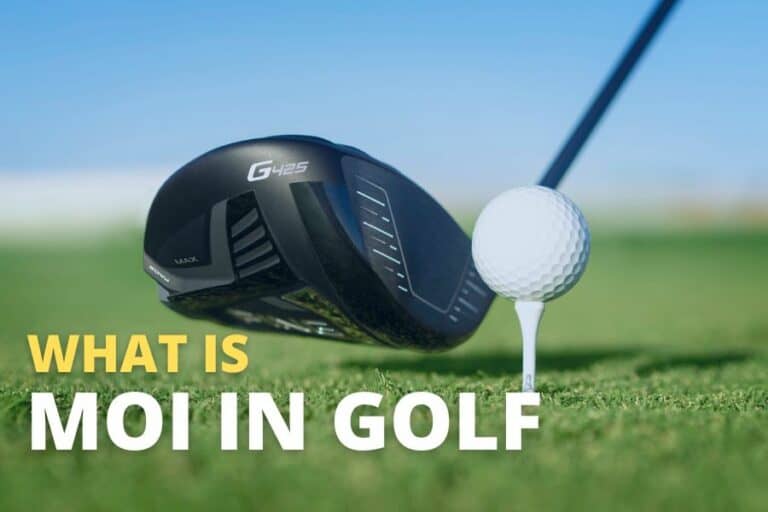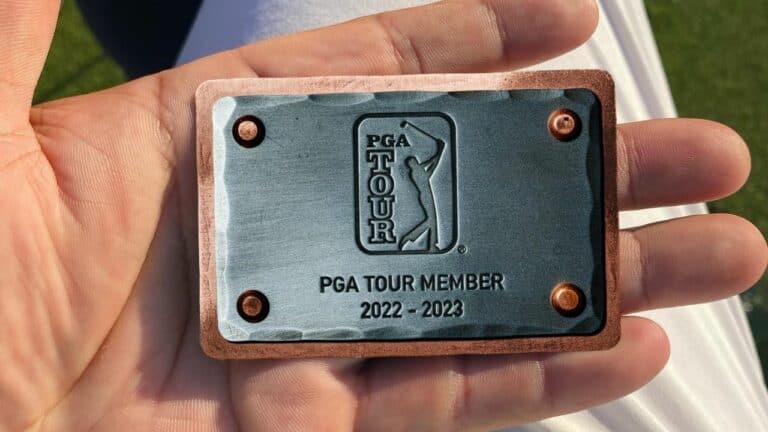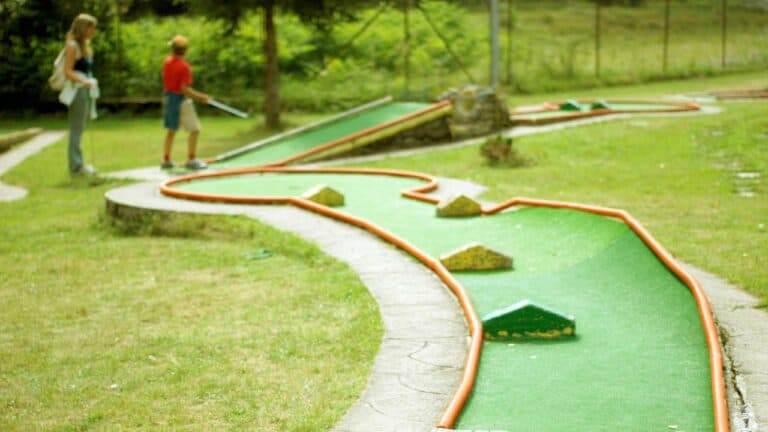What Is Offset On A Golf Club: Pros, Cons And How It Works?

In golf, a club’s ‘offset’ is an essential feature. It’s the positioning of the club head in relation to the shaft. So the term ‘amount of offset in a golf club’ refers to the distance between the clubface’s leading edge and the hosel when viewed from the address position.
The offset in golf clubs started as a design feature in putters. It was meant to help golfers place their hands ahead of the ball when they hit it. Now, most club manufacturers incorporate offset into their designs to enhance performance.
I. How Offset Works?
The design of offset in golf clubs is intended to provide golfers with a slight extra time to align the face of the golf club directly towards the target at the moment it hits the ball. This can be beneficial in reducing a slice, thereby encouraging a more direct trajectory of the ball. Many of the irons available on the market feature this offset, which is widely recognized as a game improvement feature.
Here are a few terms related to offset that will help understand offset golf clubs better:
1. Golf club offset
Golf clubs can vary significantly in the degree of offset they feature. Some may exhibit a distinct offset, while others are designed with less. The extent of offset is usually dependent on the manufacturer’s design and the type of golfer the club is aimed at.
Offset is generally denoted in millimeters. For irons, a substantial offset could range from 5mm to 8mm. Putters typically have the most considerable offset measurements.
2. Onset
Onset is the opposite of offset in golf clubs. In an onset club, the front edge of the clubface aligns ahead of the hosel or neck. This is also known as a “negative offset” or “face-forward” design in iron clubs. Onset is less common and is typically found in blade-style irons preferred by highly skilled players.
3. Face Progression
Face progression is another term related to offset. It refers to the horizontal measurement from the centerline axis of the shaft to the leading edge of the clubface. It’s a measure used to evaluate the onset or offset of the club. More face progression means less offset, and less face progression means more offset.
II. Best Offset Golf Clubs: Our Top Picks
Here we have created a list of best offset golf clubs for better performance on the golf course:
Best Offset Drivers:
- Ping G400 SFT Driver
- Cobra F Max Offset Driver
- Callaway Women’s Mavrik Max Driver
Best Offset Irons:
- TaylorMade SIM Max Irons
- Ping G400 Irons
- Cobra F- Max Airspeeds Irons
Best Offset Putter:
- Ping Anser
III. Pros and Cons of Offset
Let’s look into the advantages and drawbacks of an offset in golf clubs to better understand how it can impact your game:
Pros:
- Squaring the clubface: Offset helps in squaring the clubface at impact. This means the face of the club aligns better with the target, promoting straighter shots.
- Reduced Slicing: Slicing means the ball curves to the right for right-handed golfers, and to the left for left-handed golfers. Offset clubs can help reduce this by enabling you to hit the ball straighter.
- Increased Forgiveness: Offset clubs are often a bit easier to use because they have a larger sweet spot. This means even if you don’t hit the ball perfectly in the center, your shot can still be decent.
- Higher launch angles: Offset clubs can help to promote a higher launch angle. This is because the clubface is set back from the shaft, allowing the golfer to hit the ball on an upward trajectory, which can result in longer distances.
Cons:
- Potential for Hooking: While offset clubs can reduce slicing, they might cause hooking. This means the ball could curve to the left for right-handed golfers and to the right for left-handed golfers.
- Shots Shaping: With offset clubs, it can be harder to control the ball’s path or to intentionally curve shots (like for a draw or fade). This is because these clubs are designed to make the ball go straight.
- Adjustment Period: If you’re used to standard clubs, switching to offset clubs might feel different at first. It might take some time to get used to how they look and feel, and how they affect your swing and the ball’s flight.
IV. Differences between Offset Vs Non- Offset Golf Clubs
Here’s a comparison table to illustrate the differences between Offset and Non-Offset Golf Clubs:
| Parameters | Offset Golf Clubs | Non-Offset Golf Clubs |
| Visual Appeal | Might not be visually appealing to some players due to the clubface set back from the shaft. | Preferred by many players due to the direct alignment of the clubface with the shaft. |
| Forgiveness | Offers increased forgiveness for off-center hits | Requires more precise contact for optimal performance |
| Slice | Less risk of slicing | Relies on the player’s skills to prevent slices. |
| Launch Angle | Promotes higher launch angles which could lead to longer distances. | Typically results in slightly lower launch angles |
| Suitable for | High Handicappers and Beginners | Low to Mid Handicappers |
V. What is offset in Golf Drivers?
Offset in golf drivers refers to the intentional positioning of the clubface slightly behind the hosel. When you address the ball with an offset driver, the leading edge of the clubface is set back, providing a visual cue to help square the clubface at impact.
This design feature aims to assist golfers, especially those who struggle to naturally square the clubface during their swing.
Offset in golf drivers is particularly suitable for golfers with slower swing speeds and those who encounter challenges in consistently achieving a square clubface at impact with a driver.
The offset design gives these players a bit more time to make necessary adjustments during their swing, reducing the likelihood of slices and promoting straighter shots off the tee.
VI. What is offset in Golf Irons?
Offset in irons is similar to drivers, where the clubface is set slightly back from the hosel. It offers the golfer additional time during the swing to square the clubface at impact. This is beneficial for players with slower swing speeds and those who tend to slice the ball.
Progressive offset Iron
The offset varies in degree throughout the set in progressive offset irons. Long irons have the most offset and it decreases as you move to the shorter irons. This design accommodates the decreasing swing speed as the loft increases and shaft length shortens.
VII. Can offset clubs cause a hook?
Yes, it can. When using offset clubs, there is a possibility of hitting a hook shot. A hook occurs when the clubface closes too much at impact, causing the ball to sharply curve to the left (for right-handed players).
The offset design of these clubs can increase the likelihood of this happening, especially with longer clubs.
It’s important to remember that while offset clubs can contribute to a hook, other factors such as grip, swing path, and individual swing characteristics also come into play. So, the effect of offset on your shots may vary depending on your personal style of play.
Related Article: How To Fix A Hook In Golf?
VIII. Can Offset cause a Pull?
Yes, offset golf clubs might cause the ball to go left of the target, which is called a ‘pull shot.’ This happens because the offset design gives you extra time before the club hits the ball. But if the clubface closes too soon, the ball goes left (for right-handed players).
Everyone’s swing is different, so the effect can vary. Also, many things can cause a pull shot, not just the offset in your club.
IX. Should You Use Offset Golf Clubs?
The choice of using offset golf clubs should be based on your skill level and the characteristics of your swing. These clubs, which have the clubface slightly behind the shaft, can help less skilled players increase their accuracy and decrease slicing by giving them more time to square the clubface at impact.
On the other hand, most professional and skilled amateur players prefer non-offset clubs or those with little offset for better control and feel. Therefore, it’s vital to choose clubs that match your playing style and skill level.
Conclusion
Understanding offset in golf clubs can significantly influence your choice of equipment and performance on the golf course. Whether you opt for offset or non-offset clubs will depend on your skill level, swing characteristics, and personal preference.
Take the time to test different clubs, consider your unique needs, and consult with professionals to find the optimal offset golf club for your game.
FAQs
1. Does offset really help fight a slice?
Yes, an offset club can help fight a slice. The design of the clubface being slightly behind the hosel helps delay the clubface coming through at impact, reducing the chances of an open clubface and promoting a straighter ball flight.
2. Do Pros use offset irons?
Yes, professional golfers do use offset irons to some extent. While it may not be a preferred choice for all pros, some players find that the offset design helps with alignment and reducing slices. The amount of offset used may vary depending on the player’s preference.
3. Are Irons with less offset harder to hit?
Irons with less offset are generally considered harder to hit compared to those with more offset. The minimal or no offset design requires a more consistent swing and precise ball striking. PGA Tour Players usually prefer irons with no or minimal offset.








